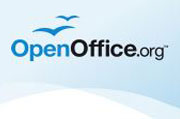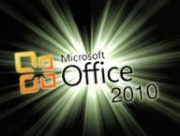Giant software companies like Microsoft have gotten where they are today by charging high prices for their products, and many enterprise users simply accept those costs as part of doing business.
Times have changed since the early days of desktop computing, however, and there are now many more alternatives to those pricey packages–including options that are not only free but also open, meaning that users can modify and customize them to suit their own needs.
If you’re tired of exorbitant software costs and the vendor lock-in that tends to go with them, then consider some free, open source alternatives. You’ll save a bundle, and you’ll wonder why you didn’t make the switch sooner.
1. Instead of: Microsoft Windows
Try: Ubuntu or another Linux distribution

There are many reasons to choose Linux over Windows today, not least of which are cost and security. Linux is increasingly an excellent choice for business, and the many distributions to choose from mean there’s something just right for every company. Pick one and give it a try–you don’t have to change anything on your desktop computers to check it out, and it could save you at least the $119 cost to upgrade to Windows 7 Home Premium.
2. Instead of: Internet Explorer
Try: Firefox, Chrome, Amaya or SeaMonkey
The browser arena is increasingly competitive, so options abound. Microsoft’s Internet Explorer may seem free, but that’s only because it’s bundled with Windows.
3. Instead of: Microsoft Outlook
Try: Thunderbird, Zimbra or SeaMonkey
For e-mail, widely used Microsoft Outlook is a frequent source of security problems. Several free packages offer easy-to-use alternatives.
4. Instead of: Microsoft Word
Try: OpenOffice.org Writer, AbiWord or KWord
After years of using OpenOffice.org, I’ve become a big fan of AbiWord. Whichever you choose, though, I doubt you’ll find there’s much–if any–learning curve.

5. Instead of: Microsoft Powerpoint
Try: OpenOffice.org Impress or KPresenter
OpenOffice.org and KOffice.org both deliver once again with excellent alternatives to Microsoft Office, which is priced starting at $279.
6. Instead of: Microsoft Excel
Try: OpenOffice.org Calc or Gnumeric
Gnumeric can read files saved with other spreadsheets. It also offers a customizable feel that can minimize the transition from proprietary software.
7. Instead of: Adobe InDesign or QuarkXPress
Try: Scribus or KWord
InDesign at $699 and Quark at $799 are excellent candidates for free, open source replacements.
8. Instead of: Adobe Illustrator
Try: InkScape, OpenOffice.org Draw or Skencil
Replace a $599 package of Illustrator, and you’ll have significant extra funds to spend on something else.
9. Instead of: Dreamweaver
Try: KompoZer, Nvu, SeaMonkey, Amaya or Bluefish
Adobe Dreamweaver may be popular, but–at $399–it’s also an expensive proposition, particularly in light of the many free alternatives available. My favorites are Nvu and KompoZer.
10. Instead of: QuickBooks
Try: GnuCash, PostBooks or Grisbi
QuickBooks pricing starts at $229.95, whereas many open alternatives cost nothing.
Of course, this is just a small sampling of the software you might want, and the free alternatives available.
Either way, however, I figure that by adopting one alternative in each of the above categories–instead of Microsoft Office for $279, Adobe InDesign for $699, Adobe Illustrator for $599, Dreamweaver for $399, QuickBooks for $229 and a $119 Windows 7 upgrade to Home Premium–a small business could save $2325 per desktop.
You can keep your specialized software applications; switch to open source for the basics, and the niche packages will be a lot easier to afford. As a result, I predict it won’t be long before you, too, are inspired to celebrate Software Freedom Day.
Follow Katherine Noyes on Twitter: @Noyesk.




